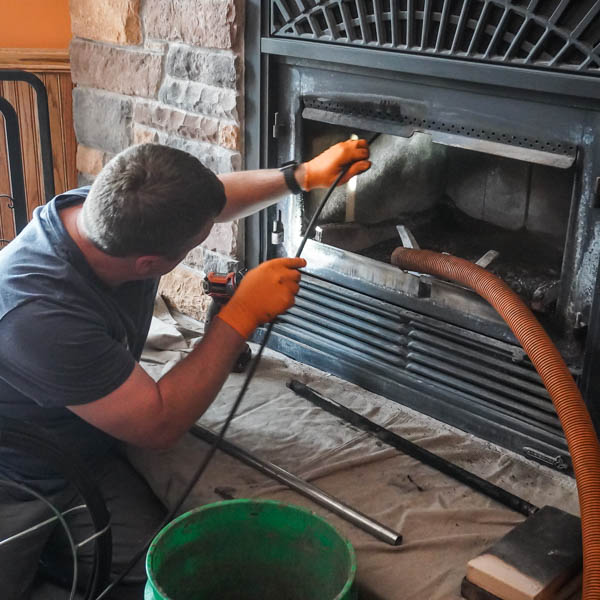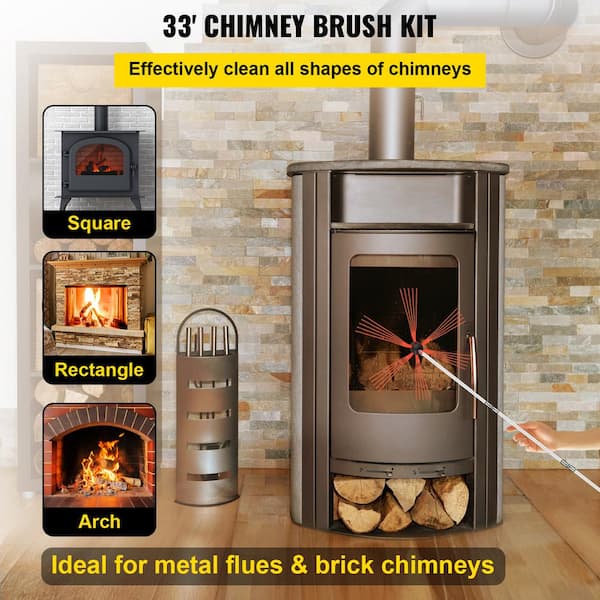Professional Tips for Effective Chimney Maintenance You Required to Know
Chimneys function as important parts in several homes, providing heat and convenience. Guaranteeing their correct upkeep is often overlooked up until problems arise. Recognizing the ins and outs of smokeshaft care can be the key to stop pricey repairs and protecting your home and household. From the significance of routine evaluations to safe operational methods, a thorough approach to smokeshaft upkeep is essential. Let's check out expert tips that can aid you keep your chimney in optimum problem for many years ahead.
Significance of Regular Inspections
Normal assessments of chimneys are essential for ensuring their safety and security and performance. Smokeshafts play a vital duty in airing vent out dangerous gases and preserving correct air movement in a home. Over time, creosote accumulation, debris, and architectural damage can occur within the chimney, posing significant threats such as smokeshaft fires or carbon monoxide leaks.
During a smokeshaft evaluation, trained experts assess the problem of the chimney, seeking any kind of indications of damages, blockages, or damage. They likewise examine the integrity of the flue, smokeshaft liner, and chimney cap to ensure every little thing is in appropriate working order. By determining and addressing issues early, costly repair services or potential risks can be stayed clear of.
Normal assessments not only assist in preserving the safety and security of the smokeshaft however also contribute to its general performance. A well-maintained and clean chimney operates better, making sure correct air flow and reducing the danger of interior air contamination. Scheduling annual chimney inspections is a proactive action that homeowners can take to protect their residential or commercial property and loved ones.
Cleaning Strategies and Regularity
Preserving the security and performance of a smokeshaft includes not only regular inspections yet also applying ideal cleaning methods and establishing the ideal frequency for cleansing. Chimneys need to be cleaned up by a professional smokeshaft sweep at the very least as soon as a year, also if they are not frequently made use of. However, if the chimney is made use of regularly, specifically with wood-burning ranges or fire places, it might require more regular cleanings to prevent the build-up of creosote, an extremely combustible compound that can cause smokeshaft fires.
House owners need to never disregard smokeshaft cleansing, as it is necessary for keeping a practical and secure smokeshaft system. Normal cleanings not just decrease the danger of chimney fires however also boost the chimney's total performance and longevity.
Resolving Chimney Leaks

When attending to chimney leakages, complete inspection and timely fixings are important to prevent water damages and keep the architectural honesty of the chimney. Leakages in a chimney can lead to severe problems such as mold development, deterioration of the smokeshaft framework, and also possible fire hazards. To properly deal with chimney leakages, start by inspecting the chimney cap, crown, flashing, and stonework for any type of indications of damage or wear.
Recognizing Creosote Accumulation
To recognize the possible hazards of creosote build-up in smokeshafts, it is important to recognize its development procedure and influence on chimney efficiency. Creosote is a black or brown tar-like compound that collects inside smokeshaft systems when wood or fossil gas are melted. As smoke increases via the smokeshaft, it cools down and condenses, resulting in the formation of creosote, which sticks to the chimney wall surfaces.

Normal smokeshaft assessments and cleanings by an expert smokeshaft sweep are visite site vital in stopping creosote build-up and making sure the risk-free operation of your smokeshaft system.
Safe Operation Practices
Carrying out correct safety and security methods is necessary for the efficient and protected procedure of chimney systems. When utilizing a fireplace have a peek at this site or wood-burning cooktop, it is essential to follow certain safety and security practices to avoid possible threats. Always guarantee that the chimney is expertly checked and cleansed on a regular basis to get rid of any type of creosote build-up, which can lead to chimney fires. Additionally, use a strong screen or glass door before the fireplace to stop ashes or sparks from creating a fire and getting away in your home. It is likewise crucial to never ever overload the fireplace with excessive amounts of timber, as this can bring about overheating and possible architectural damage.
Furthermore, make certain to only melt seasoned timber in your fireplace, as green or damp wood can create more creosote and cause harmful smokeshaft blockages. Never leave a fire unattended and always make certain the fire is entirely snuffed out before going to bed or leaving the home. By complying with these risk-free procedure techniques, you can delight in a warm and relaxing fire while making certain the safety and security of your home and enjoyed ones.
Conclusion
Finally, maintaining your chimney see is crucial for ensuring its safety and security and performance. Regular evaluations, appropriate cleansing techniques, addressing leakages, managing creosote accumulation, and adhering to risk-free operation practices are essential elements of chimney upkeep. By remaining on top of these tasks, you can protect against potential hazards and lengthen the life-span of your smokeshaft. It is essential to prioritize smokeshaft upkeep to keep your home safe and cozy throughout the cooler months.
Over time, creosote accumulation, debris, and architectural damage can happen within the smokeshaft, presenting severe dangers such as chimney fires or carbon monoxide leaks.
If the smokeshaft is used consistently, particularly with wood-burning stoves or fireplaces, it may need more frequent cleanings to protect against the build-up of creosote, a very flammable material that can lead to smokeshaft fires. (Chimney Maintenance San Jose)
To comprehend the possible dangers of creosote accumulation in smokeshafts, it is important to recognize its development process and influence on chimney efficiency. As smoke climbs through the smokeshaft, it condenses and cools down, leading to the formation of creosote, which sticks to the chimney walls.
Constantly guarantee that the smokeshaft is professionally examined and cleaned up consistently to eliminate any type of creosote buildup, which can lead to chimney fires.